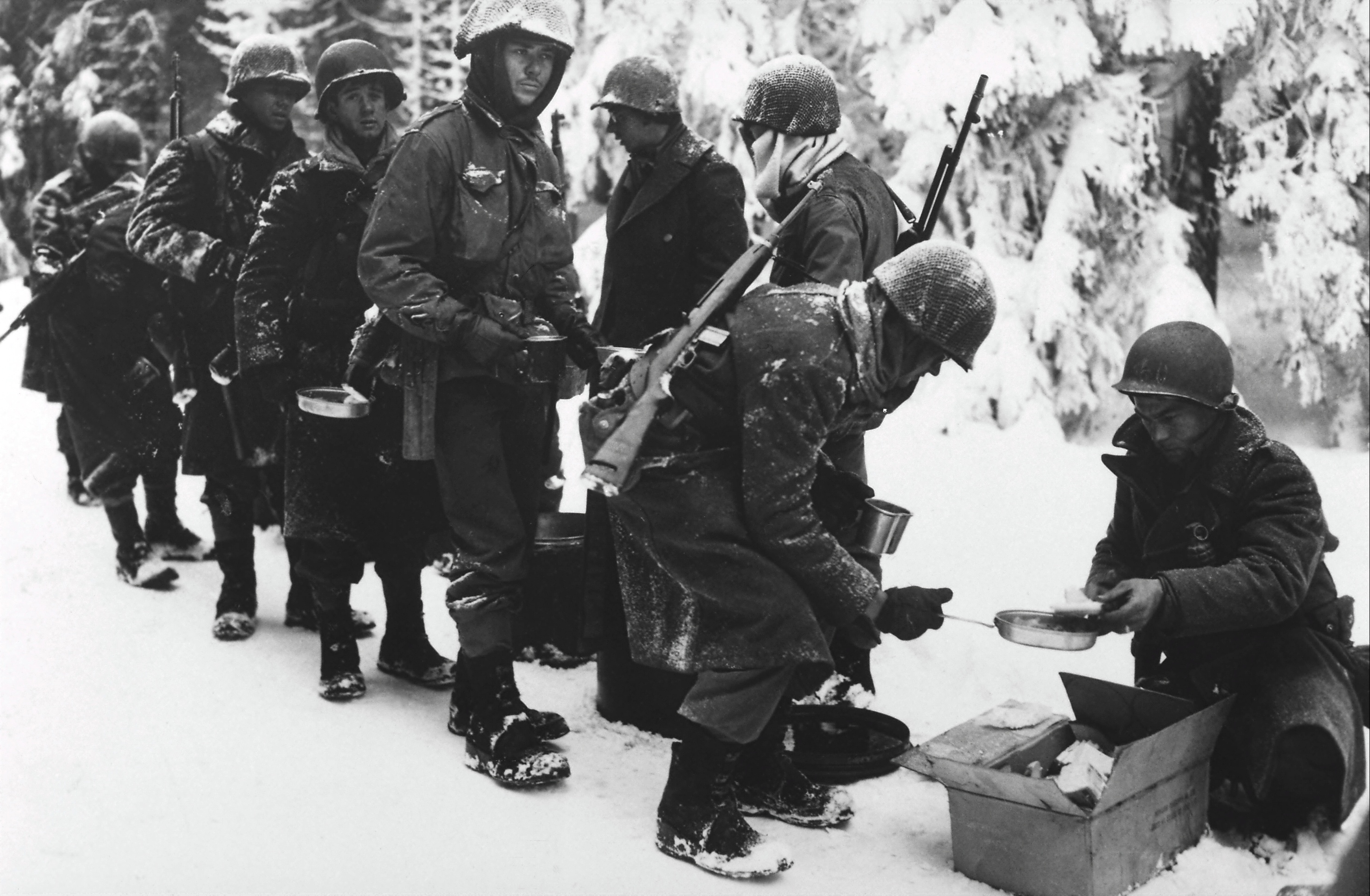
How this research began…
I don’t consider myself an expert on the “Battle of the Bulge.” The campaign is dense and eventful. But I thought I knew enough to elevate me beyond the ranks of battle hound. Then I read Alex Kershaw’s “The Longest Winter” and discovered the actions of the Intelligence & Reconnaissance Platoon of the 394th Infantry. As with some of my work, this post is centered around a map of the engagement. During the course of the research, I discovered that two of the GIs (PFC Bill James of White Plains, NY and PFC Risto Milosevich of Los Angeles, CA) were students of my alma mater, Tarleton State (Texas A&M). Good to know.
A shortage of manpower in the US military at the twilight of World War II meant that some of the best and brightest college students in the United States who were training to be experts and officers were instead reassigned to frontline units in 1944 as enlisted men.
As members of the Army Specialized Training Program (ASTP), the draftees were supposed to be a university-trained cadre of high-grade technicians and specialists. Instead, on 1 April 1944, most were reassigned to infantry, airborne and armored combat units. Several such men found themselves in a so-called Intelligence and Reconnaissance (I&R) Platoon of the US 394th Infantry Regiment in the maelstrom of the European theater of combat in the winter of 1944.
The second week of December 1944 found this platoon on an unremarkable hilltop overlooking the Ardennes village of Lanzerath, a few thousand yards from the German frontier. In command was First Lt. Lyle Bouck Jr, just 20 years old but not an ASTPer. Instead, he was a pre-war army volunteer who had risen through the ranks to become an officer. Neither he nor his men suspected that they had an engagement with history.
I&R platoons were supposed to have men with above average intelligence. Each division in the US army from the mid-1930s to the end of the 1950s had at least one I&R platoon within regimental headquarters companies. The Table of Organization & Equipment (TO&E) authorized 25 troops by 1944 plus seven ¼-ton vehicles (jeeps).
One of the 105,000 ASTP trainees to be reassigned to combat divisions was the postwar giant of postmodernism, Kurt Vonnegut, who was sent to the doomed 106th Infantry Division. Like the men of the I&R Platoon in the 394th Regiment, Vonnegut was also an I&R member, of the 423rd Regiment.

The I&R platoons consisted of a headquarters and three reconnaissance squads. The platoon headquarters had one jeep while each squad had three jeeps, some of which carried radios. The soldiers were all trained as infantrymen but they operated as scouts.
Regimental S-2 trained the men further in reconnaissance and information gathering methods.
The army’s FM 7-25 field manual described the main function of the I&R platoon as being the eyes and ears of the regimental commander. Their tasks were to gather information about enemy forces and reconnoiter terrain not readily accessible to infantry units. They were also supposed to provide early warning to the regiment about enemy forces, regain lost contact with adjacent, attached and assigned friendly units and identify the flanks of hostile forces. Another role was to search undefended or captured towns and villages, and inspect captured enemy equipment and positions.
When the 394th’s I&R Platoon moved to Lanzerath on 10 December 1944, their orders partly exceeded the mandate of such platoons. For one, their deployment was the act of plugging a gap in the lines and in a veritable no-man’s land between not only US divisions but also two American corps.
Continue reading “No Retreat: The Battle of Lanzerath 1944”














